Satoimo no Nikorogashi is a great choice if you want to experience a traditional Japanese simmered dish made with taro. You can enjoy the taro's creamy texture along with a sweet and savory sauce. Discover the natural flavor of taro combined with the essence of Japan.
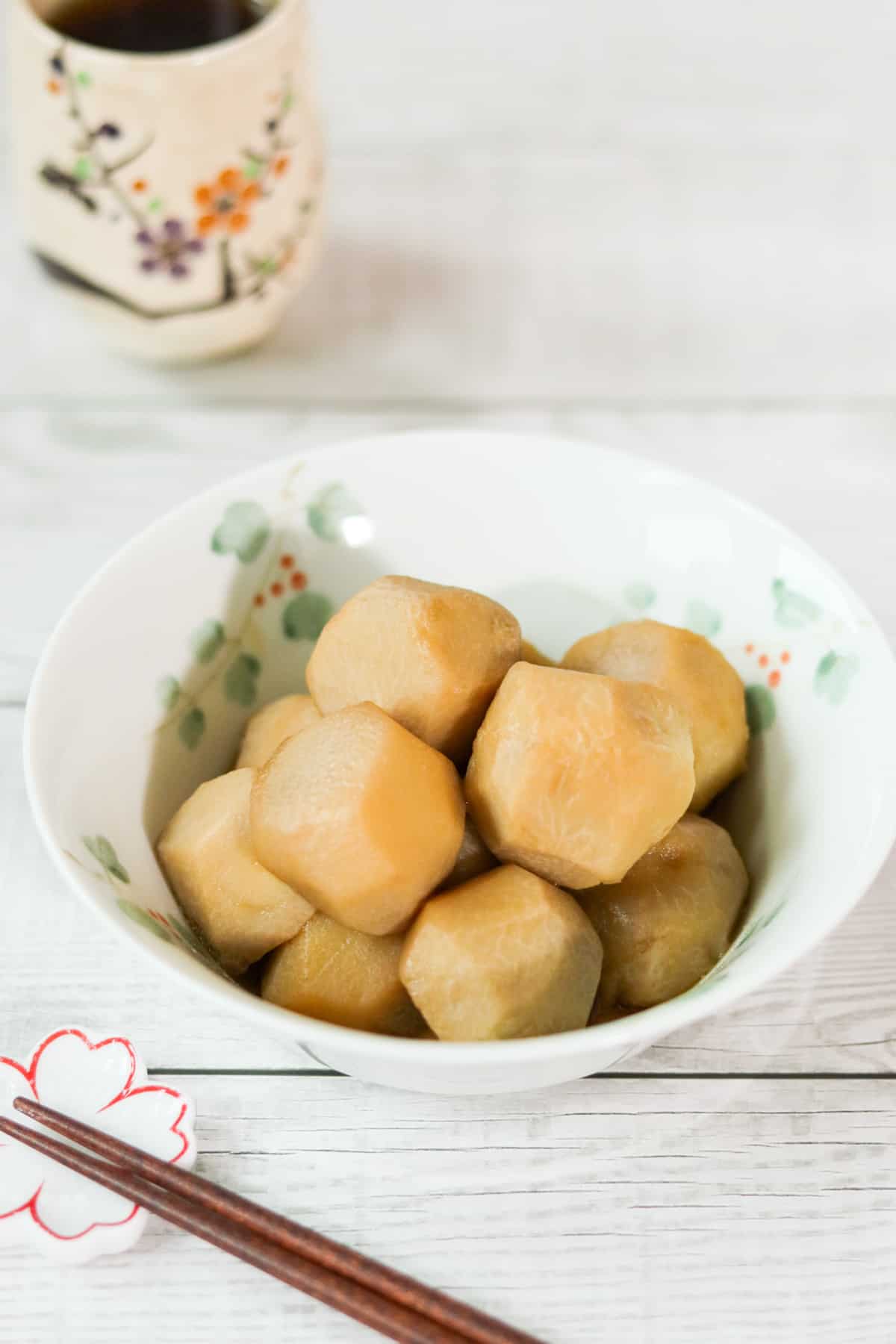
Jump to:
What is Satoimo no Nikorogashi?
Satoimo no Nikorogashi is a traditional Japanese dish made by simmering taro in a sweet and savory Japanese sauce. "Satoimo" means taro root, "no" indicates possession (connecting the preceding and following words), and "Nikorogashi" refers to the method of simmering small tubers and roots in a small amount of sauce without letting them burn. Depending on the region in Japan, it may also be called "Nikkorogashi" or "Nikorobashi."
Taro has been a staple ingredient in Japanese cuisine since ancient times, so this dish is a comfort food for Japanese people. Despite its glossy, amber-colored appearance with infused flavors on the outside, the inside offers a natural color and taste of taro. Its unique, creamy texture may not be common outside of Asia, but for those who are interested in discovering traditional Japanese cuisine, this is a dish worth making.
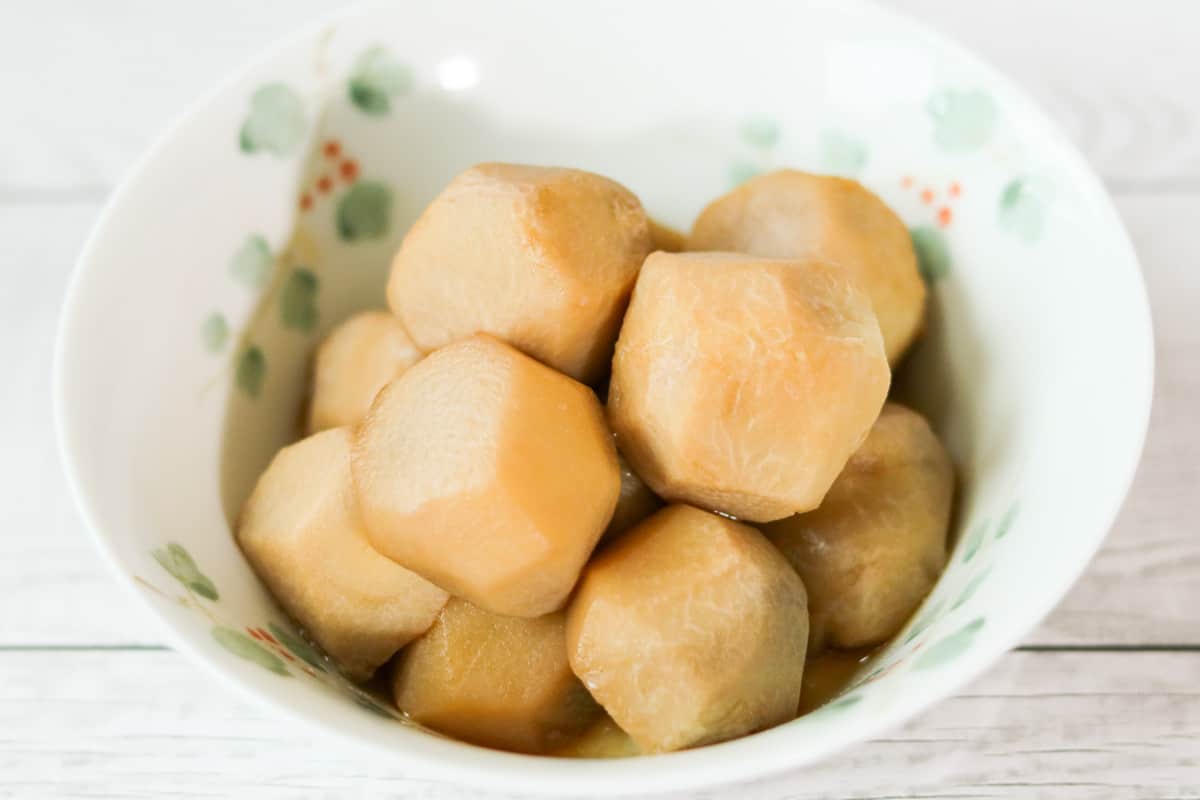
Exploring taro
Taro is a root vegetable known for its particularly low calorie content among tubers and roots, and it is also rich in potassium. Its starch particles are much smaller compared to those in potatoes, and they gelatinize finely when heated, resulting in a creamy texture.
When peeling taro, you will notice that it feels slimy. This sliminess is due to its water-soluble dietary fibers. Excessive sliminess can alter the texture of the dish, so it is common practice to reduce this sliminess during cooking preparations.
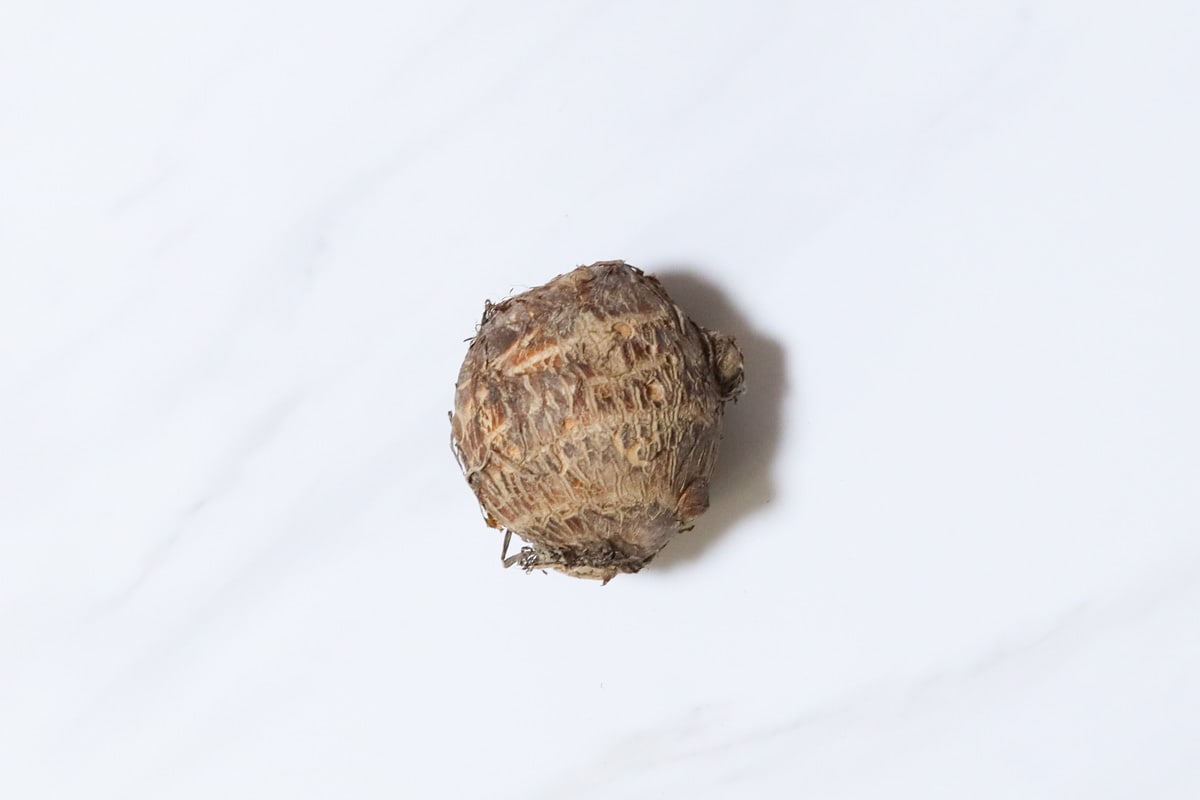
Managing the sliminess of taro
The sliminess of taro can be removed using the following methods:
- Peel the taro, rub it with salt, and then rinse it with water.
- Boil the taro for about 5 minutes and then rinse it in water (it doesn't matter whether you peel the taro before or after boiling).
If you want to thoroughly remove the sliminess, you can also use both methods together.
However, there is something to note before removing the sliminess. While it is common to remove the sliminess from taro, when it comes to satoimo no nikorogashi, it is not always necessary to remove this sliminess. This is because the sliminess of taro can also be considered an element for enjoying the dish. In fact, in Japan, there are regions that remove the sliminess when making this dish, and there are regions that do not.
Leaving the sliminess benefits the dish by not requiring any preparation for the taro, making the cooking process easier, and it adds a sticky texture to the dish. On the other hand, removing the sliminess allows the taro to absorb flavors more easily and prevents the simmering sauce from clouding.
In this recipe, I have only used the salt rubbing method to reduce some of the sliminess, but you can choose to leave more sliminess or remove it according to your preference.
Simple guide to otoshi-buta (drop lid)
When making Japanese simmered dishes, it is common to use an otoshi-buta (drop lid).
An otoshi-buta is a lid that sits directly on top of the ingredients in a pot or pan. Placing the lid directly on the ingredients allows the cooking liquid underneath to circulate more evenly, resulting in more efficient simmering with less liquid.
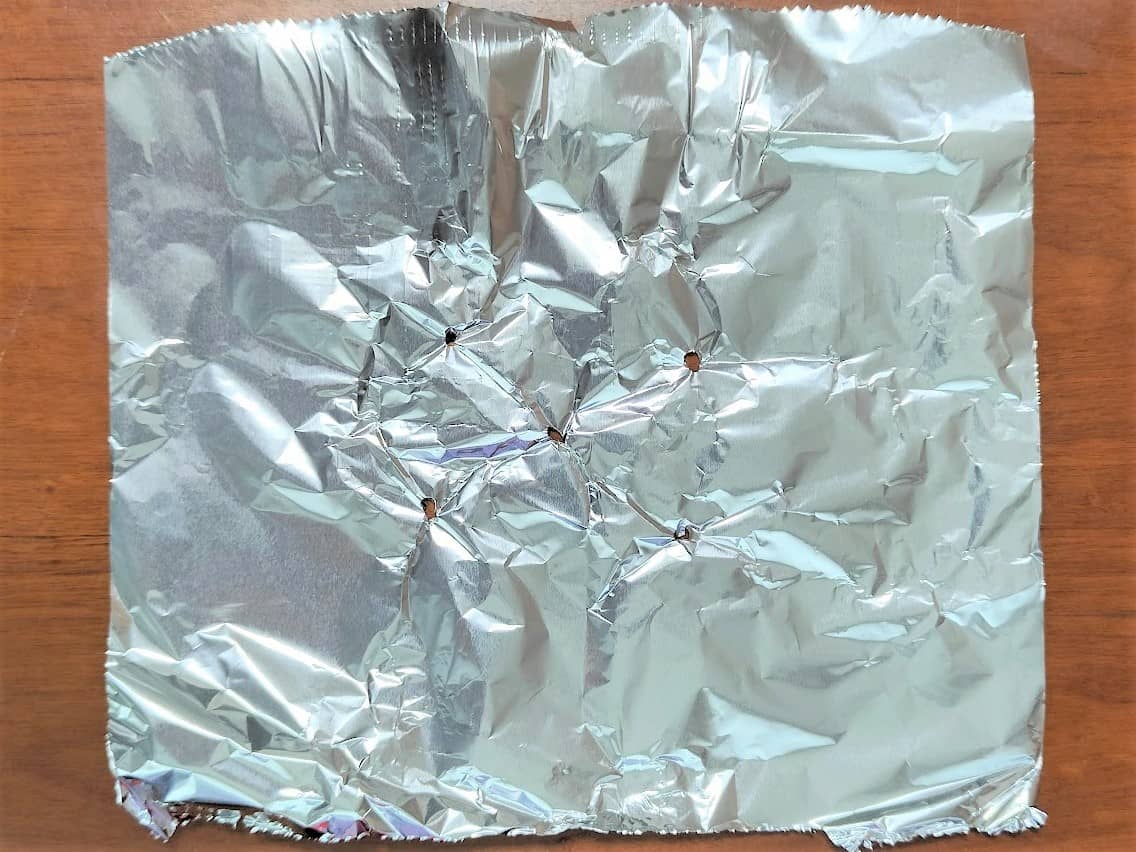
Commercial versions are available, but you can easily make one yourself by simply poking one or more holes in a sheet of aluminum foil—as shown in the photo above. The holes help prevent the otoshi-buta from floating up due to steam pressure. Since it is easy to make, I encourage you to give it a try.
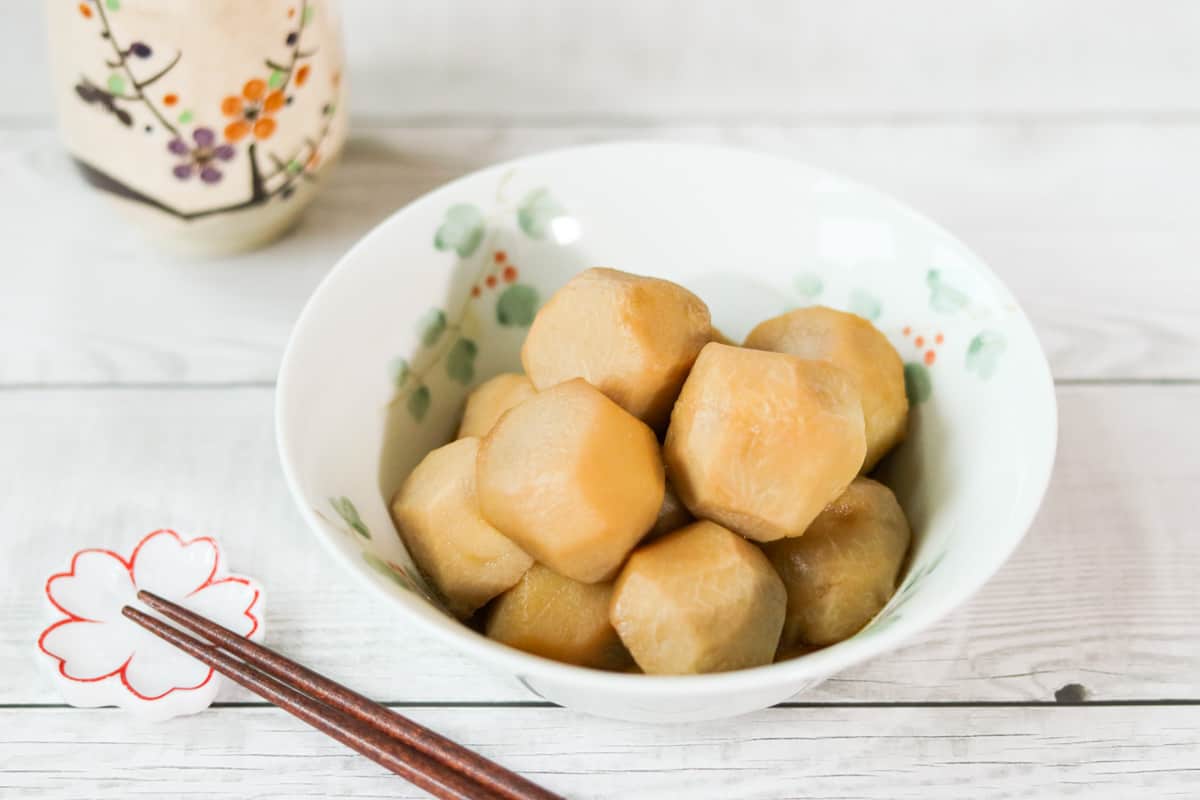
📋Step-by-step recipe
Equipment
- otoshi-buta (drop-lid) (You can easily make one by following the instructions above. If that seems like too much trouble, you can simply use a regular lid instead.)
Ingredients
- 8 taro (eddoes) (about 1.6 oz/45 g each)
- ½ tsp salt (for the taro)
- 1 cup water
- 2 tsp sugar
- 2 Tbsp soy sauce
- 2 Tbsp mirin
Instructions
🕒 Total: 35 mins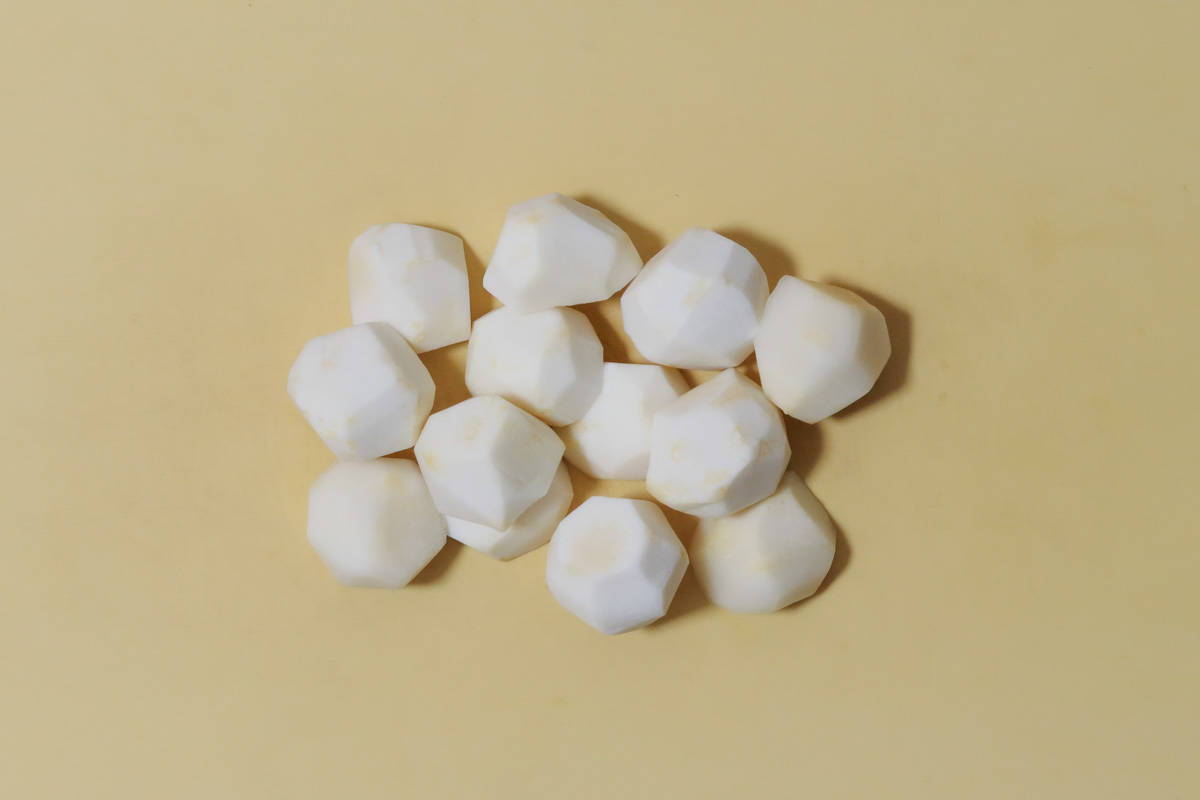
Step 1
Wash and peel taro. Sprinkle salt over it, rub with your hands to remove the sliminess, and then rinse under running water. If the taro pieces are larger than bite-sized, cut them into 2 to 4 bite-sized pieces each.
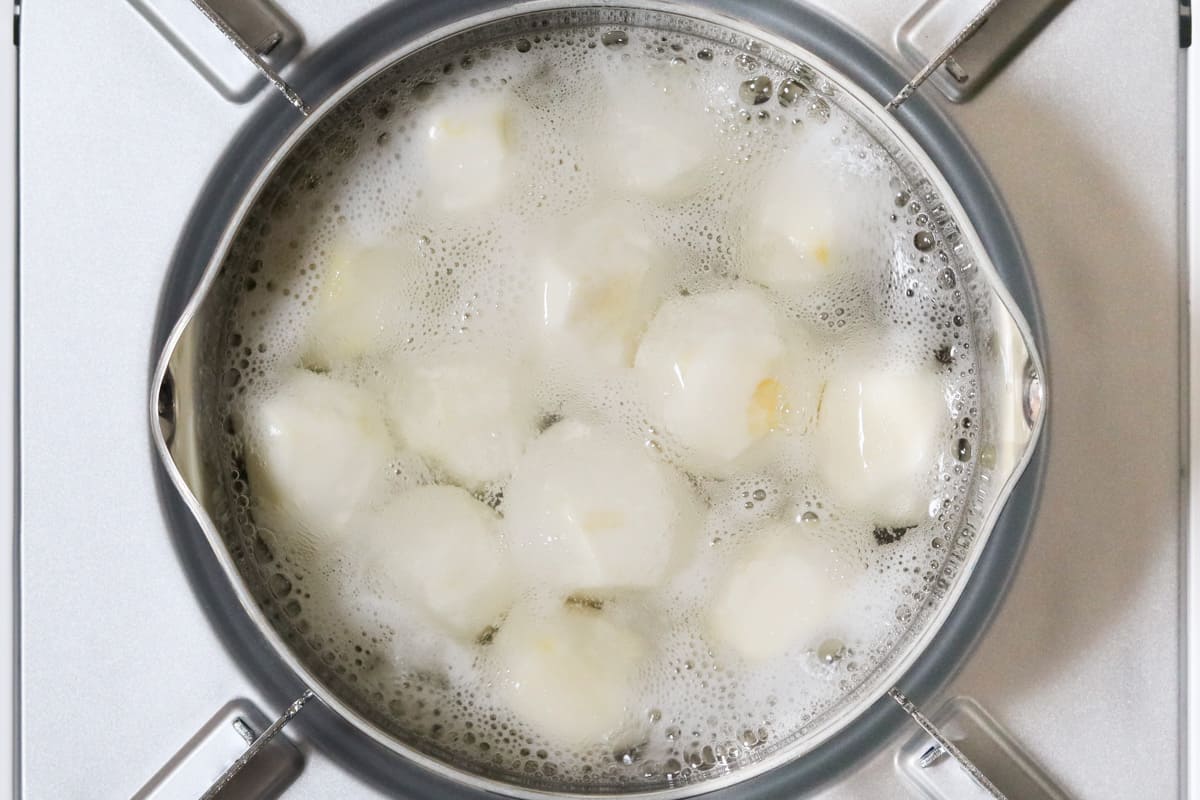
Step 2
Mix water and sugar in a pot. Add the taro and bring it to a boil. Once boiling, cover with an otoshi-buta and let it simmer over low heat for 15 minutes.
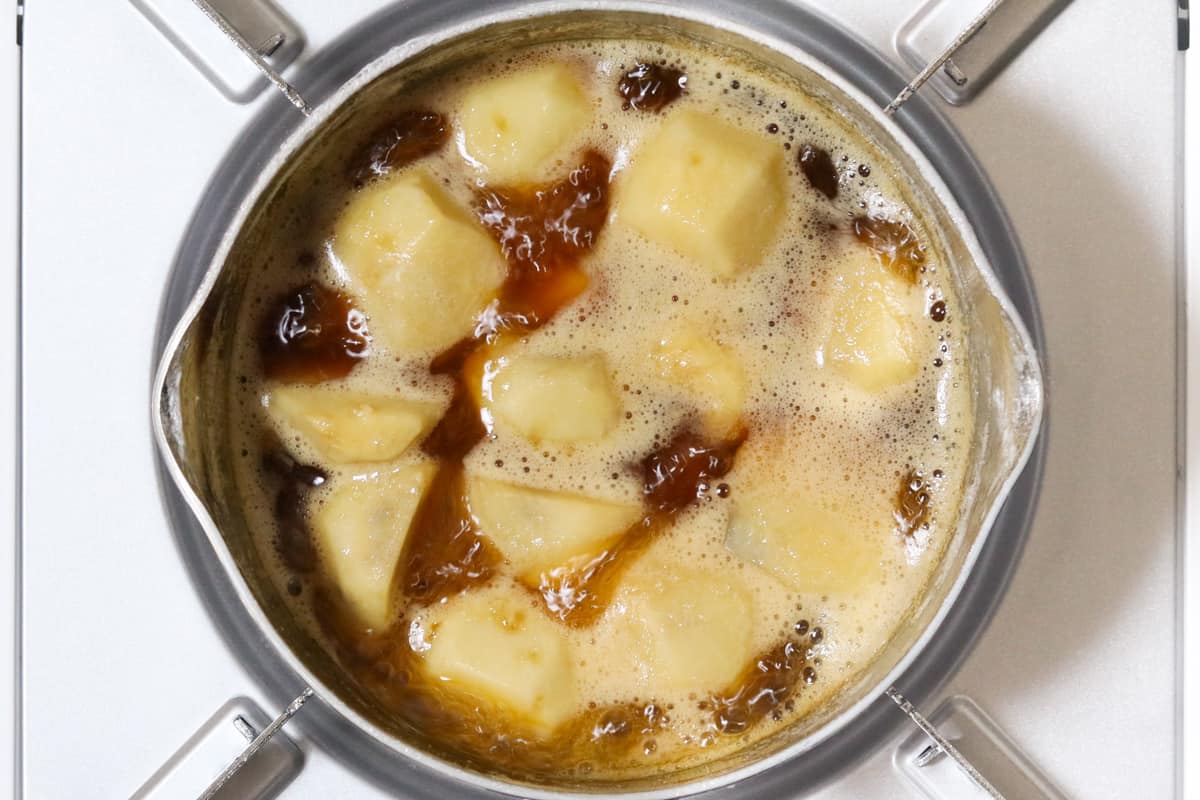
Step 3
Remove the otoshi-buta, then add soy sauce. Continue simmering for 5 minutes, occasionally flipping the taro.
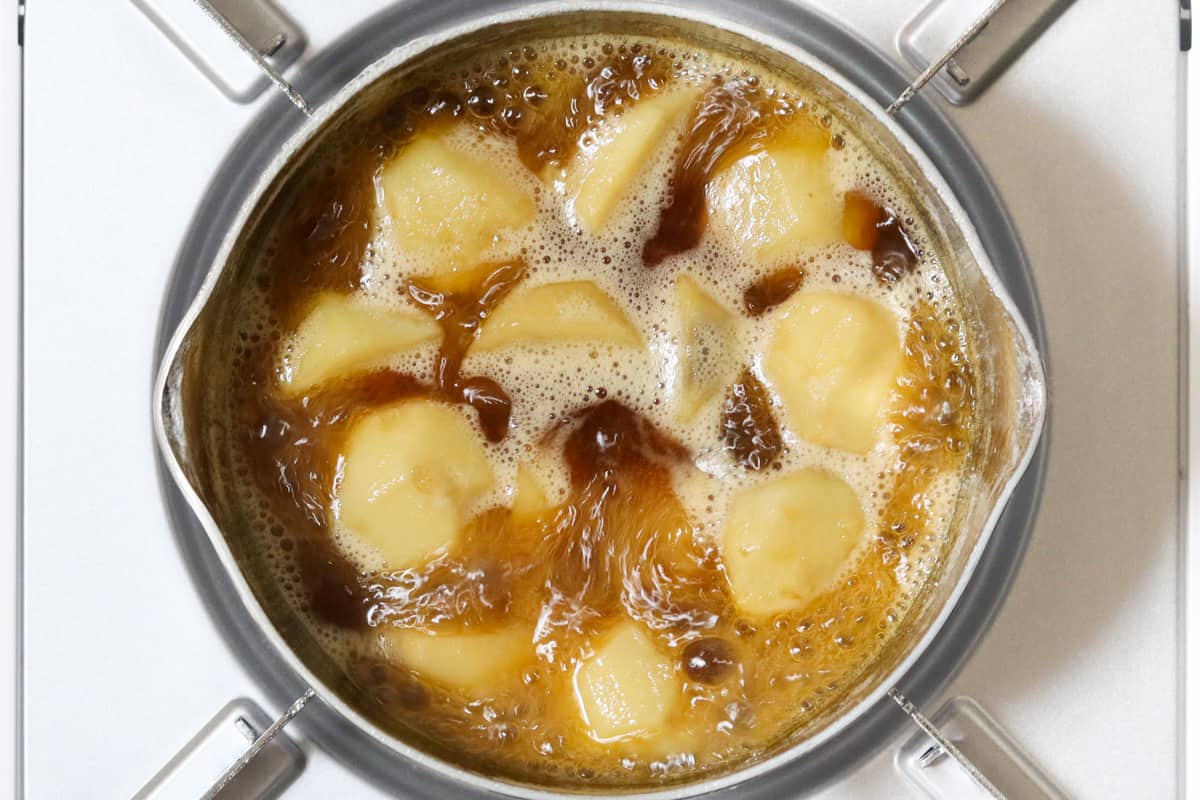
Step 4
Add mirin and continue simmering for a few more minutes, occasionally flipping the taro.
To store
You can store it in the refrigerator for up to 3 days.
Tips on how to make
- If you find it difficult to peel taro, wipe off any moisture from the taro. This will make the knife less slippery.
- Put the taro into a pot before heating the water, and then start boiling it. Starting the boiling process at this stage allows the taro's temperature to gradually rise, bringing out its natural sweetness more effectively.
- Seasonings should be added separately in the following order: sugar, soy sauce, and mirin. The reason for adding sugar first is that it takes longer to infuse its flavor. Adding mirin last provides the dish with a glossy finish.
If you try this recipe, I’d love to hear what you think. Please consider leaving a review and star rating in the comments below. If you enjoyed it, I’d really appreciate it if you shared it with your friends.
Recipe card
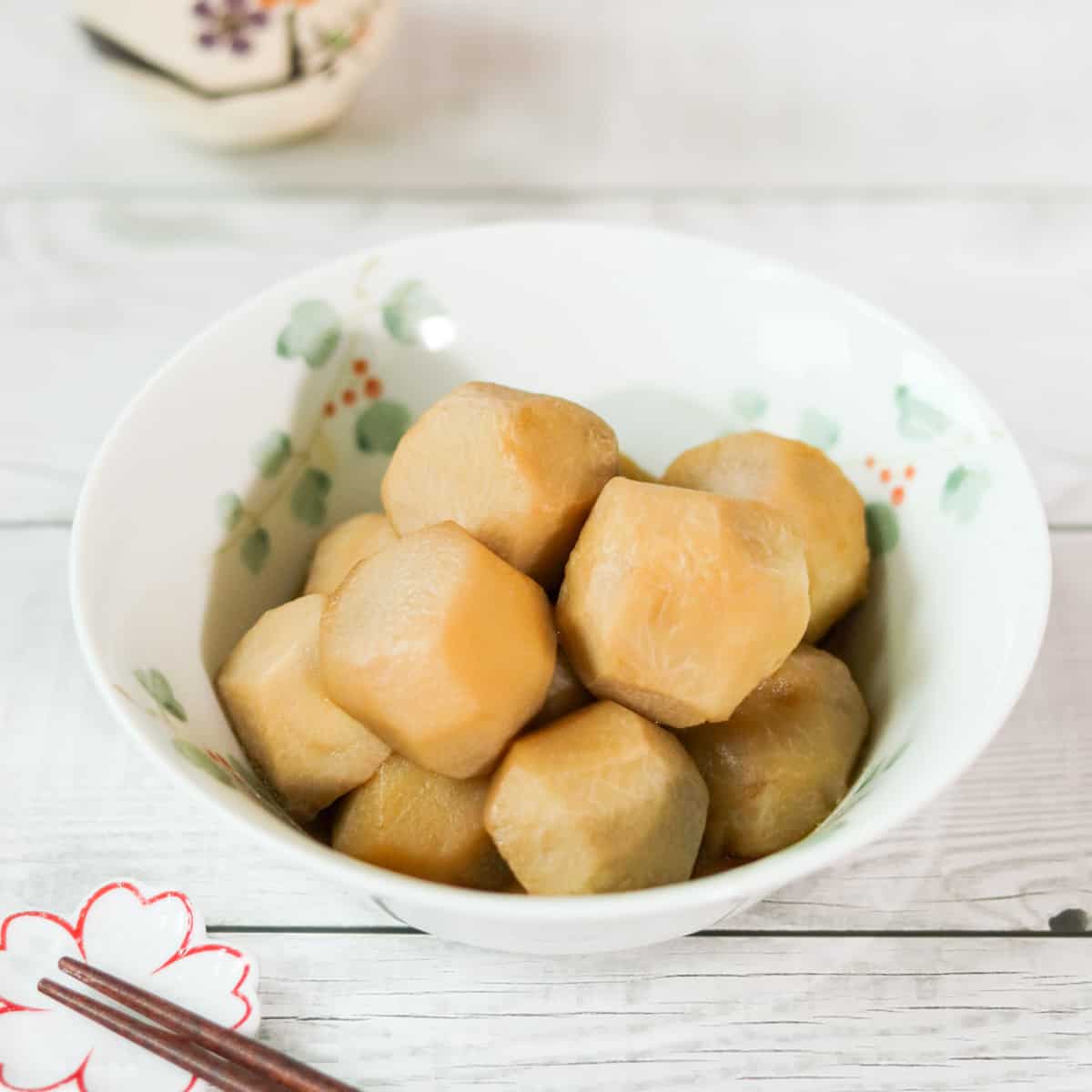
Satoimo no Nikorogashi (Simmered Taro)
Equipment
- otoshi-buta (drop-lid) (You can easily make one by following the instructions above. If that seems like too much trouble, you can simply use a regular lid instead.)
Ingredients
- 8 taro (eddoes) (about 1.6 oz/45 g each)
- ½ tsp salt (for the taro)
- 1 cup water
- 2 tsp sugar
- 2 Tbsp soy sauce
- 2 Tbsp mirin
Instructions
- Wash and peel taro. Sprinkle salt over it, rub with your hands to remove the sliminess, and then rinse under running water. If the taro pieces are larger than bite-sized, cut them into 2 to 4 bite-sized pieces each.
- Mix water and sugar in a pot. Add the taro and bring it to a boil. Once boiling, cover with an otoshi-buta and let it simmer over low heat for 15 minutes.
- Remove the otoshi-buta, then add soy sauce. Continue simmering for 5 minutes, occasionally flipping the taro.
- Add mirin and continue simmering for a few more minutes, occasionally flipping the taro.
Notes
- You can store it in the refrigerator for up to 3 days.




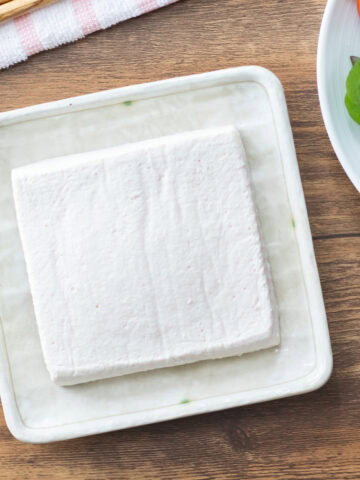
Leave a Rating and a Comment